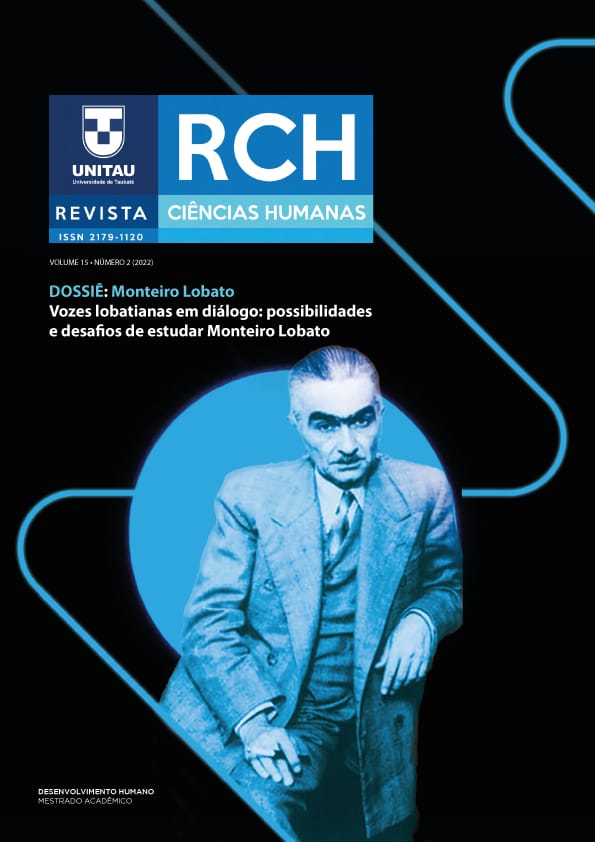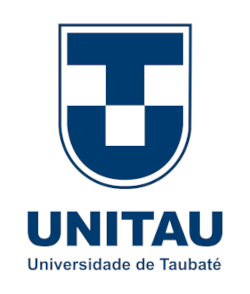MONTEIRO LOBATO Y LA COMIDA EN EL VALE DO PARAÍBA PAULISTA
DOI:
https://doi.org/10.32813/2179-1120.2022.v15.n2.a864Keywords:
Monteiro Lobatocomida, Vale do Paraíba.Abstract
The objective of this article is to understand the geographic and social context in which Monteiro Lobato was inserted and the culture and culinary tradition of the Vale do Paraíba Paulista region at the time. The present research is an excerpt from the master's thesis "FAZER, COMER E AMAR: Social Representations of the elderly about food in childhood" which, by dealing with issues related to memories about food for elderly people born in Vale do Paraíba Paulista, discussed cultural aspects and literary of that object.
This study demonstrated through the social object food, its communicative action, which Monteiro Lobato used to portray the society of the time, with its habits and customs. In addition, the appreciation of regional knowledge and flavors of the Vale do Paraíba Paulista, contained in his books and stories.
Metrics
References
Afonso, P. (2009) 1 Festa do arroz em Tremembé. Disponível em: <http://www.al.sp.gov.br/noticia/?id=281909>.
Andrade, A. C. A. (1996a). Povoamento do Vale do Paraíba. In: Andrade, A.C. A.; Abreu, M. M. Histórias de Taubaté através de textos: Prefeitura municipal de Taubaté. Taubaté/SP: Gráfica e editora Minerva.
Andrade, A. C. A. Origens do Negro Vale-paraibano. (1996b) In: Andrade, A.C. A.; Abreu, M. M. Histórias de Taubaté através de textos: Prefeitura municipal de Taubaté. Taubaté/ SP: Gráfica e editora Minerva.
Amon, D. (2014). Psicologia Social da Comida. Petrópolis, Rio de Janeiro: Vozes
Azevedo, C. L.; Camargos, M. & Sacchetta, V. (2001). Monteiro Lobato: Furacão na Botocúndia. 3. ed. São Paulo: Senac.
Braga, V (2004). Cultura Alimentar: contribuições da antropologia da alimentação. Saúde em Revista, Piracicaba, 6. p. 37-44.
Camargos, M. & Sacchetta, V. (2008). À mesa com Monteiro Lobato. Rio de Janeiro: SENAC.
Canesqui, A. M. & Garcia, R. W. D. Uma introdução à reflexão sobre a abordagem sociocultural da alimentação. In: Canesqui, A. M. & Garcia, R.W.(Orgs). Antropologia e nutrição um diálogo necessário. Rio de Janeiro, Fiocruz, 2005.
Cichini, L. C. & Brito, L. (2009). Considerações sobre a personagem Tia Nastácia nas histórias lobatianas. Anais VI Seminário de Iniciação Científica, Só Letras, Universidade Estadual do Norte do Paraná, Campus Jacarezinho.
Damatta, R (1987). Sobre o simbolismo da comida no Brasil. O correio da Unesco. Rio de Janeiro, p. 22-23.
Florençano, P. C. & Abreu, M. M. (1992). Cadernos culturais do Vale do Paraíba. Taubaté: CERED- Centro de Recursos Educacionais.
Gouvêa, M. C. S (2005). Imagens do negro na literatura infantil brasileira: análise historiográfica. Educação e Pesquisa, São Paulo, 1(31), p. 77-89.
Lajolo, M. (1998). A figura do negro em Monteiro Lobato. Lobato Revista Presença Pedagógica, São Paulo.
Lobato, J. B. M. (2002). Histórias de Tia Nastácia. 32° edição, 9° reimpressão, http://www.groups-beta.google.com/group/digitalsource
Lobato, J. B. M. (1978). Cidades Mortas. 20 ed., São Paulo: Brasiliense.
Lobato, J. B. M. (1977). A Barca de Gleyre. São Paulo: Brasiliense.
Lobato, J. B. M. (1977). Sítio do Pica-Pau Amarelo. São Paulo: Brasiliense.
Lobato, J. B. M. (1947). O Minotauro. Capítulo XV, Batatas e Sócrates. São Paulo: Brasiliense.
Lobato, J. B. M. (1995). Histórias de Tia Nastácia. São Paulo: Brasiliense.
Maciel, M E (2004). Uma cozinha a brasileira. Estudos Históricos., Rio de Janeiro. V. 1 número 33, Jan./Jun. p. 25-39
Menasche, R. (2008). A ética alimentar, como cuidar da saúde e do planeta. Cadernos IHU em formação. Universidade do Vale dos Rios dos Sinos. São Leopoldo, RS.
Montanari, M (2008). Comida como cultura. 14 ed., São Paulo, SENAC.
Ribeiro, S. M. P. (2003) Tia Nastácia: até que ponto um instrumento de divulgação de estereótipo de idosa negra. In: Congresso Luso Afro de ciências sociais Diversidades e (DES) Igualdades. Salvador, BA, UFBA.
Ricci, F. (2006) Indústrias têxteis na periferia: Origens e desenvolvimento: o caso do Vale do Paraíba. Taubaté-SP, Cabral Livraria e Editora Universitária.
Santana-Dezmann, V. (2021). O retrato falado do racismo na obra infantil de Lobato. Recuperado em blog: https://vanetesantanadezmann.blogspot.com/2021/01/o-retrato-falado-do-racismo-na-obra.html
Silva, A. L. (2011) A conveniência da cultura popular: um estudo sobre pluralidade de domínios e danças devocionais e ação dos mestres do Vale do Paraíba. 256f. [Tese Doutorado em Ciências Sociais – Pontifícia Universidade Católica de São Paulo].
Sobrinho, A. M. (1978) A civilização do café 1820, 1920. 3 ed. São Paulo: Brasiliense.
Ortiz, J. B. (1988a.) São Francisco das Chagas de Taubaté. Livro 1° Origens. Coleção “Taubateana”, n. 10, III série, Imprensa Oficial do Estado IMESP- São Paulo, SP.
Ortiz, J. B.(1988b) São Francisco das Chagas de Taubaté. Livro 2° Taubaté colonial. Coleção “Taubateana”, n. 10, III série, Imprensa Oficial do Estado IMESP- São Paulo, SP.
Vasconcellos, Z. M. C. (1982). O Universo Ideológico da Obra Infantil de Monteiro Lobato. São Paulo: Traço Editora.
Wootmann. K. A. W. (2006) O sentido simbólico das práticas alimentares. In: Gastronomia Cortes & Recortes. Distrito Federal: SENAC.
Downloads
Published
How to Cite
Issue
Section
License
Copyright (c) 2022 Human Sciences Journal - RCH

This work is licensed under a Creative Commons Attribution 4.0 International License.
The publications of the Human Sciences Journal are registered under the Creative Commons Attribution CC-BY license.
1. The contents of the manuscripts are the exclusive responsibility of their author.
2. It is allowed the total or partial reproduction of manuscripts published in the journal, provided that the source is cited.
3. When submitting their manuscript to the Journal, the authors certify that they are of their own authorship and unpublished (not published in any digital or printed media).
4. The copyright of the articles published in the Journal are of the author, with first publication rights reserved for this journal.
5. For disclosure purposes, the Journal may replicate the works published in this journal in other media, such as social networks (Facebook, Academia.Edu, etc.).
6. The Journal is of public access, therefore, the authors who submit manuscripts agree that they are of free use.
7. In case of any illegality, fraud, or other attitude that puts in doubt the honesty of the publication, especially the practice of plagiarism, the manuscript will be automatically rejected.
8. If the manuscript has already been published, it will be immediately removed from the base of the Journal, its citation linked to the Journal will be prohibited and the cancellation of the referred publication shall be reported in the next issue of the one in which the article was published. In case of the procedure for the withdrawal of the paper the authors will be informed beforehand, being guaranteed the right to a broad defense.
9. The personal data provided by the authors will be used exclusively for the services provided by this publication and will not be made available for other purposes or to third parties.






